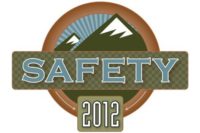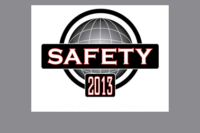Safety and health pros have been known as teachers, among many roles, for decades and decades. But it’s a touchy subject and the role doesn’t get the attention it serves. Why? It implies that employees are students, which to an extent they are, always learning new aspects of safety and health practices. But employees are grown adults and it is denigrating to discount their years of experience, lessons learned over the years, and their ideas and solutions to many frontline hazards. Employees know best where the next incident is likely to occur. They are not fresh-off-the-street kids.
The training tradition
Let’s focus on the role of teacher that most safety and health professionals assume or are assigned as part of the job. The most obvious example of this teaching role is training. Professionals spend a good bit of their time bringing in employees for compliance training, annual hazcom training mandates and the like. There is also training on company safety and health rules, behavioral observations and feedback, identifying hazards and assessing the degree of risk involved, participating in incident analyses and getting at the root causes, how to work effectively as teams, if you see something say something, reporting protocols, building cultures and disciplinary procedures to name a few but certainly not all the training topics.
Education’s emphasis on relationships
In education today, the relationship between teacher and student is seen as paramount to making or breaking a student’s attitude, behavior and grade performance. Sure, a minority of students are preternaturally mature, poised, goal-driven and they know what they want from their education. The teacher’s impact on these gifted students is still influential but does not require the time put in with students less sure of themselves, more introverted, and perhaps in need of social and emotional support.
The relationship a teacher has with these students starts before the morning bell. It means getting out from behind the desk and circulating, showing active interest in individual students, talking and lecturing less and asking questions and listening more. One of the most important steps a teacher can take is to simply listen. Active listening without distractions can slowly build trust and create a safe space for conversations. Sharing problems and anxieties without judgment from the teacher can raise a student’s self-confidence, improve attitudes and behaviors, and improve his or her engagement in the classroom.
The enduring relationship
The relationship is ongoing, perhaps involving a hallway or lunchtime conversations or some spontaneous meeting. It continues after the bell. The teacher is open and available for after-hours give-and-take visits with the student. The teacher keeps notes on how the relationship is improving, and where improvement is needed. They don’t pack up and leave at the bell.
An obvious connection
The connection between being a teacher and being a safety and health pro is obvious, isn’t it? A pro’s classroom is the shop floor, construction site, warehouse, assembly line, wherever there is a workforce. The best safety and health pros break down that workforce into its individual components – one-on-one relationships. One-on-ones are not always feasible in very large groups of employees, but even then the sharp-eyed pro knows who is alienated, apathetic, bitter, a resister, perhaps with problems at home, finances, or even mental health issues. Companies in 2024 are giving more attention – and resources – to help workers with personal issues affecting work performance. Employee well-being is today’s buzzword.
The personal touch
Pros can leverage companies’ interest in the “whole” employee by taking the time to seek out and build one-on-one relationships. Pros have been doing this for a long time, actually. In workplaces with superior safety and health performance, NIOSH noted decades ago that safety and health officers in these companies made a point of knowing each employee’s name, something about their family and their hobbies, and made a point of touching base with employees on a regular basis – not about safety but their lives and how they are doing. This is the old tradition of “safety contacts” – making daily verbal contact with employees.
With today’s documented high level of disengagement among employees, lack of loyalty, high turnover, and the growing recognition by employers of possible personal emotional burdens, it’s the right time for safety and health pros to embellish their teaching skills to build and sustain relationships with a workforce the likes of which we’ve never seen before. Employees are more questioning, more cynical, more apt to move on. They are not the loyal one-company-for life order-takers of decades past. Relationships are paramount to understanding and motivating the workforce in 2024.




